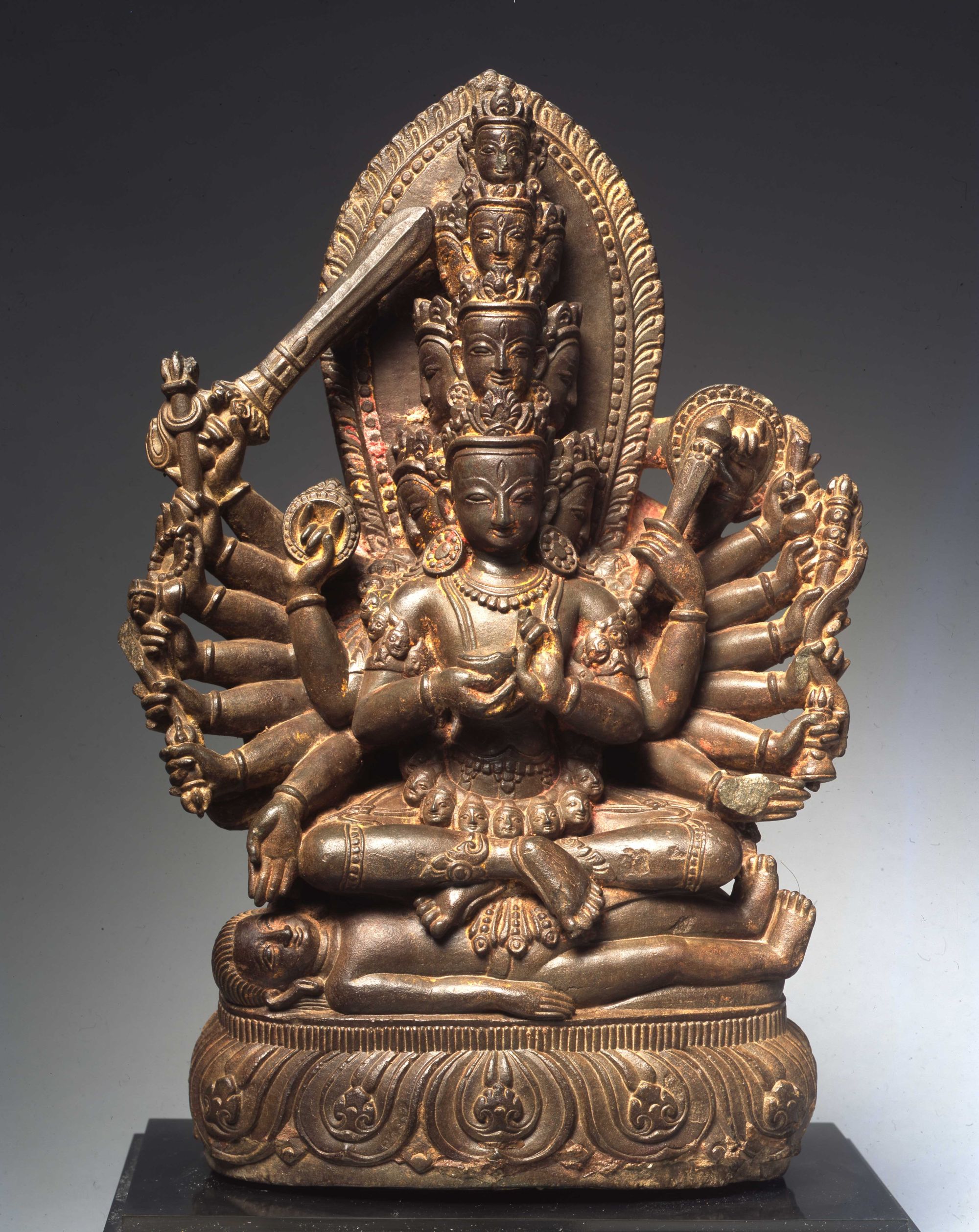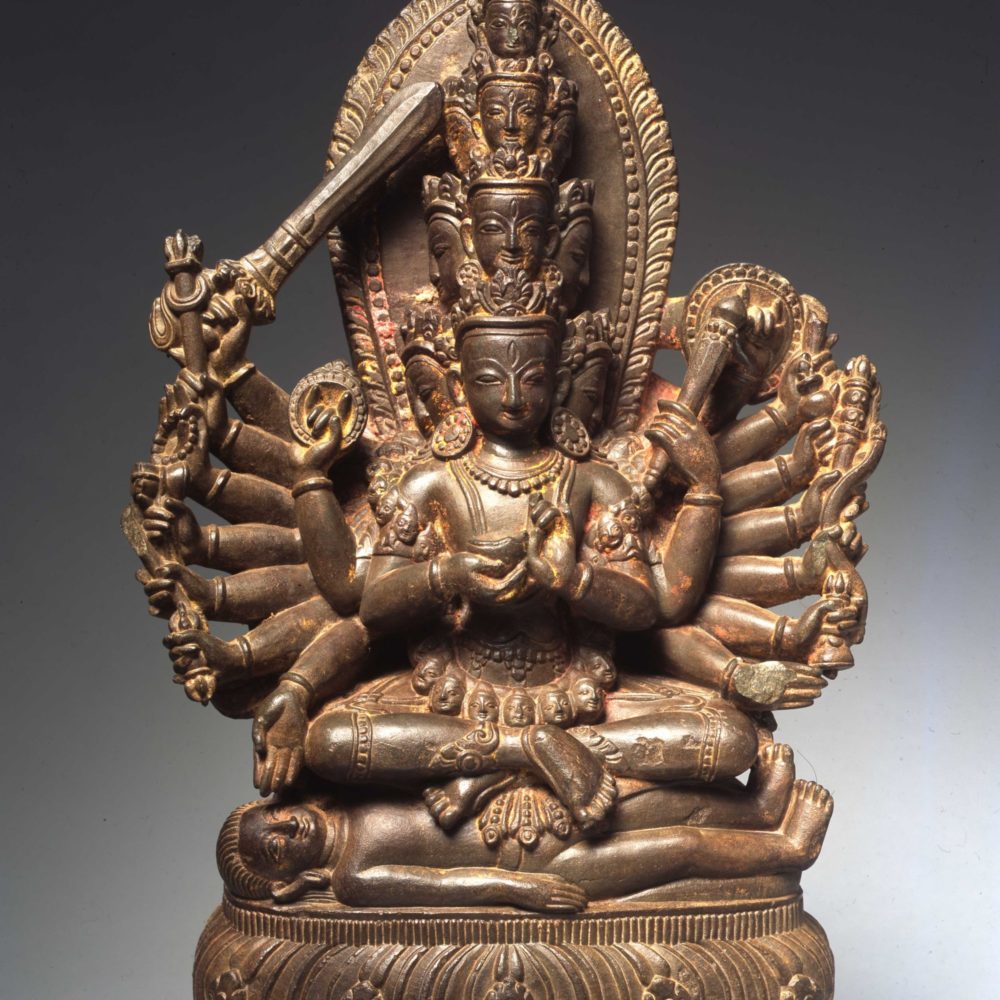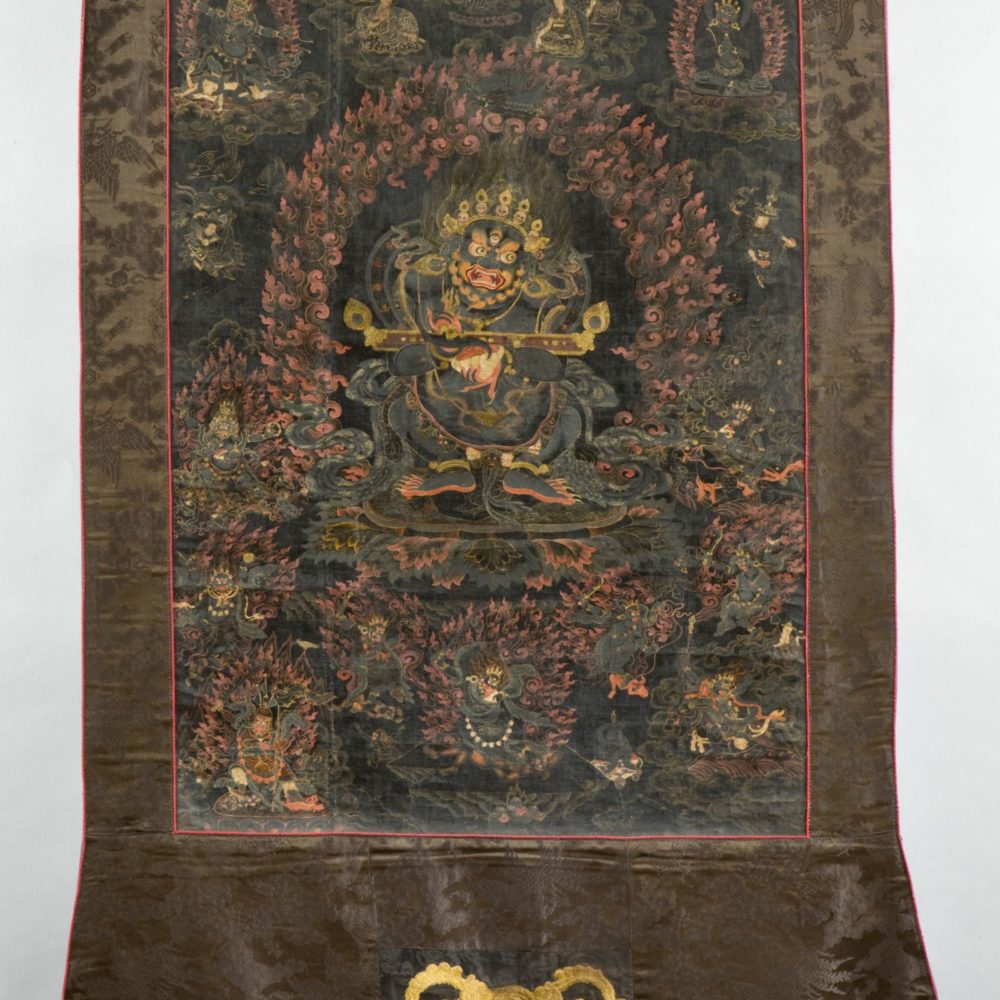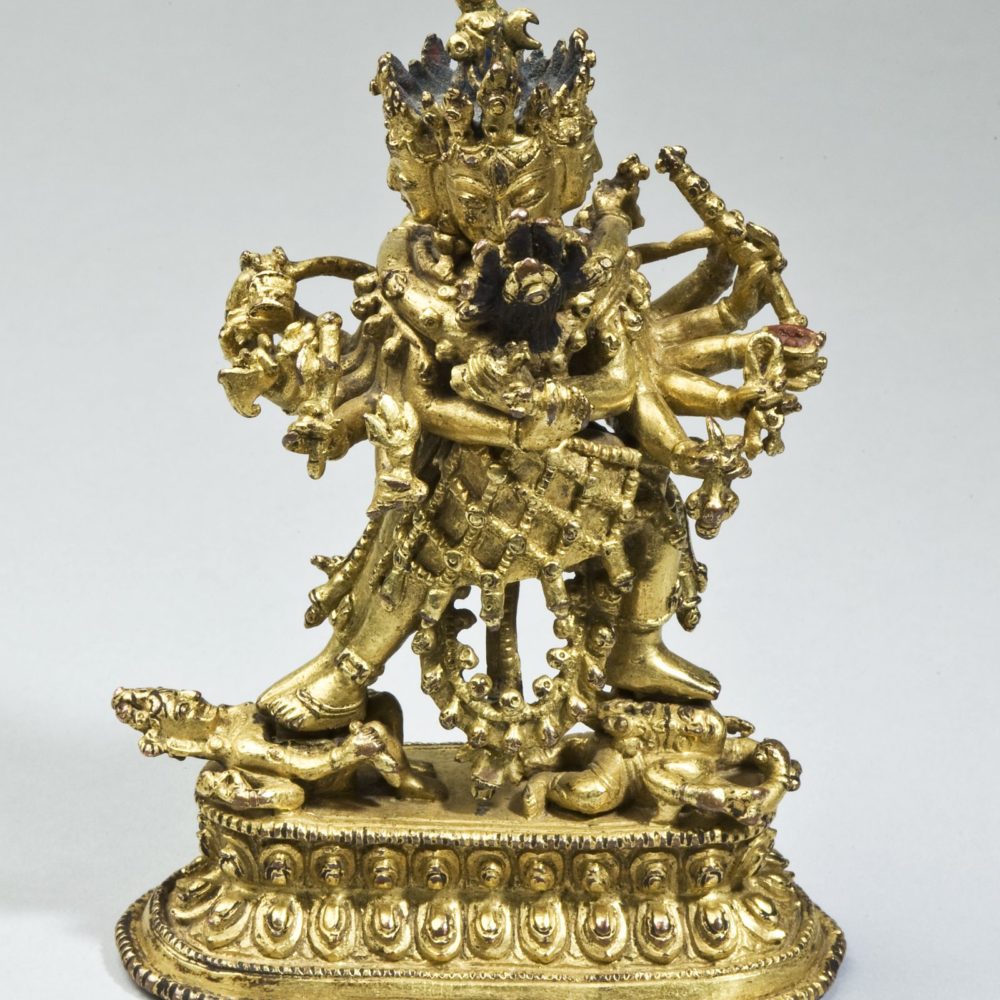A stone sculpture of Vishnu depicted with eighteen arms and ten heads
八臂十首毗湿奴石像
16th century, Nepal
16世紀 尼泊爾
Height: 32.5 cm, 12.8 inches
高32.5釐米
This sculpture depicts the Hindu god Vishnu who has the ability to manifest in myriad forms in order to be the ‘Preserver of the World’. In this cosmic form, his many arms and heads signify that he is omnipotent as well as omnipresent – embodying the powers of the universe.
The deity is seated cross-legged upon a naked prostrate corpse – the group supported by an oval lotus petal base – and adorned with a garland of skulls. His two main hands are held in front of his chest – one holding a ritual skull cup, the other forming the ‘wheel of the law’ in a form of teaching mudra. Behind this, two arms are held up – each hand holding one of the attributes of Vishnu: the hexagonal mace and the discus or chakra. The remaining arms fan down either side of the figure – twelve of them holding a single ritual attribute in each hand; these include a vajra (signifying the indestructible nature of absolute enlightenment), sword, bell, khatvanga (or magical staff), bow and beads – many of which are also Buddhist symbols.
The sculpture is, therefore, an interesting amalgam of two important and contemporary religions concurrently followed in Nepal. This synthesis of iconography is further emphasized by Vishnu’s ten heads that rise in groups of three, and are surmounted by a solitary head; this form is similar to representations of Avalokiteshvara – in the bodhisattva’s multi-armed and multi-headed manifestation.






